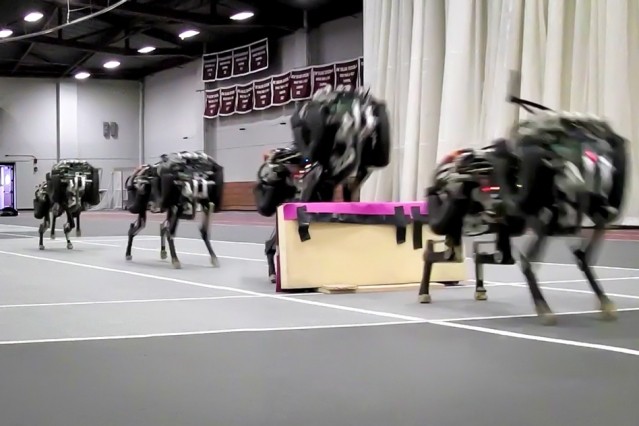Scientists from the Massachusetts Institute of Technology (MIT) have developed a unique robot in the form of a cheetah which is also the first four legged robot that can jump over hurdles on its own.
According to Sangbae Kim, a professor of mechanical engineering at MIT, this robot is truly dynamic where it can jump even while it is running.
During testings, the cheetah robot was placed on a treadmill indoors where the machine cleared an obstacle that is up to 18 inches high with an average speed of five miles per hour while running.
The cheetah robot was tied to a harness while it was tested while running on a track indoors but tests were also carried out on an indoor track without any support. The robotic cheetah was also able to jump over numerous hurdles in an indoor track without any harness as well.
Scientists have developed a series of simple algorithms so that the cheetah will be able to detect a hurdle and estimate the size and distance. This simple formula is then applied where the researchers presented the ground as a straight line and any obstacle as a deviated part of the line. This formula helps the cheetah robot to make a evaluation of the height of the obstacle without any human interference.
During the next part of the algorithm, when the robot has already detected a hurdle, it allows the cheetah to change its approach upon arriving at the obstacle. This special algorithm computes the ideal position for the jump so that it can successfully complete the hurdle. It also returns the robot to its original running speed after it lands from the hurdle.
According to the researchers, this "approach adjustment algorithm" just runs as the robot is moving with every stride during every step. This optimization process goes through 100 milliseconds to complete which is also half the time it takes for a single stride.
The last part of the algorithm involves an activation when the four legged robot arrives at a jumping point. This is where the algorithm calculates the jumping trajectory. Apart from this, researchers also developed another formula that will estimate the required force for the robot's electric motors to safely launch itself over a hurdle.
Compared to the treadmill tests, the cheetah robot had a 90 percent success rate when it comes to running at indoor tracks and jumping over hurdles. Researchers believe that an indoor track allows the robot more time to estimate its jump over a hurdle since it has more space.
Check this video out and see the robot cheetah run.



























